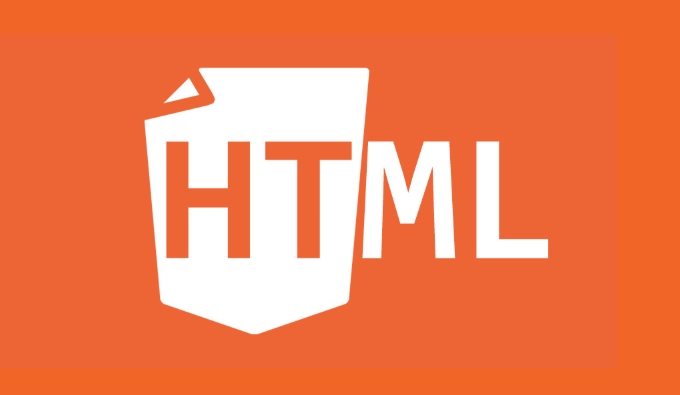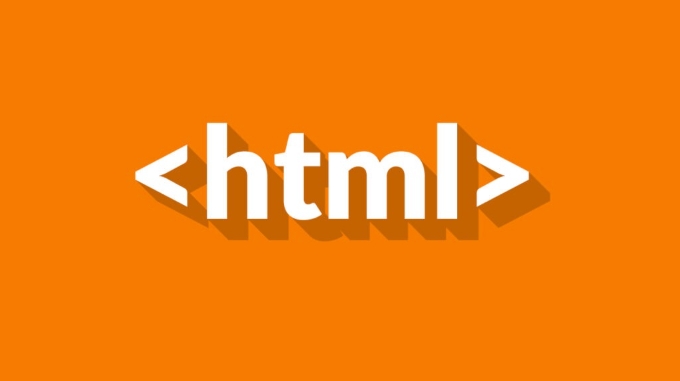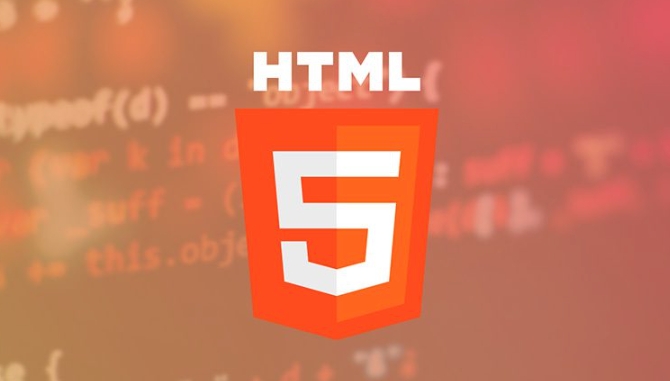How does the srcset attribute help with responsive images in html?
Jul 07, 2025 am 12:26 AMsrcset is an attribute of the <img src="/static/imghw/default1.png" data-src="https://img.php.cn/upload/article/000/000/000/175181916625665.jpeg" class="lazy" alt="How does the srcset attribute help with responsive images in html?" > tag in HTML, used to define multiple image sources, allowing the browser to select the most appropriate image based on the device's screen size and resolution. 1. It improves page loading speed and user experience, avoiding unnecessary large image downloads or blurred displays. 2. Use the w descriptor to specify the image width, combined with the sizes attribute, the browser can select the best image according to the layout width. 3. A pixel density descriptor such as 2x can be used to provide a clearer image for high-resolution screens. 4. In actual use, src should be included as fallback, and ensure that the image size is accurate and optimized well. Cross-device testing should be carried out to ensure the effect.

The srcset attribute in HTML helps with responsive images by allowing the browser to choose the most appropriate image source based on the device's screen size and resolution. This means you can serve smaller images to mobile devices and larger, higher-quality ones to desktops without extra JavaScript or complicated logic.

What is srcset and why use it?
The srcset attribute is used inside an <img src="/static/imghw/default1.png" data-src="https://img.php.cn/upload/article/000/000/000/175181916625665.jpeg" class="lazy" alt="How does the srcset attribute help with responsive images in html?" > tag to define multiple image sources that the browser can pick from. It's especially useful when designing responsive websites where images need to scale nicely across different devices.

Here's a basic example:
<img src="/static/imghw/default1.png" data-src="image-small.jpg" class="lazy"
srcset="image-small.jpg 480w, image-medium.jpg 800w, image-large.jpg 1200w"
alt="A responsive image">In this case:

- The browser picks one of the images depending on the width of the device.
- The
wdescriptor tells the browser the width of each image in pixels.
Using srcset improves page load speed and user experience by ensuring users get appropriately sized images for their screens.
How does the browser decide which image to use?
By default, the browser looks at the screen width and selects the best fit from the srcset list based on the image's width descriptor ( w ) and the current layout width (as defined by the sizes attribute, more on that below).
You can also add pixel density descriptors like 2x for high-DPI displays such as Retina screens:
<img src="/static/imghw/default1.png" data-src="image-normal.jpg" class="lazy"
srcset="image-normal.jpg 1x, image-retina.jpg 2x"
alt="High DPI image example">This way:
- Devices with standard screens get the normal image.
- High-resolution displays get the sharper version.
Without srcset , browsers would always download the same image regardless of screen capabilities, which could lead to unnecessarily large downloads or blurry visuals.
Combining srcset with sizes
To make srcset even more powerful, pair it with the sizes attribute. sizes tells the browser how big the image will appear on the page at different viewport widths, using media queries.
Here's a full example:
<img src="/static/imghw/default1.png" data-src="image-small.jpg" class="lazy"
srcset="image-small.jpg 480w,
image-medium.jpg 800w,
image-large.jpg 1200w"
sizes="(max-width: 600px) 100vw,
(max-width: 900px) 50vw,
33vw"
alt="Responsive image with sizes">What's happening here:
- On screens narrower than 600px, the image takes up the full width (
100vw), so the browser picks the smallest image. - Between 601px and 900px, the image is half the screen width (
50vw), so a medium-sized image is ideal. - Above 900px, the image takes up about a third of the screen (
33vw), so the largest image is selected.
This gives the browser enough context to make smart decisions about which image to load — not just based on screen size, but based on how the image is actually laid out.
A few things to keep in mind
- Always include a
srcattribute – it acts as a fallback ifsrcsetisn't supported. - Use correct image dimensions – Make sure the
wvalues ??match the actual pixel width of each image. - Optimize your images – Even with
srcset, oversized or unoptimized images can still hurt performance. - Test across devices – Use browser dev tools to simulate different screen sizes and see which image gets loaded.
It might take a bit of setup, but once you've got it right, srcset makes handling responsive images much easier and more efficient.
Basically that's it.
The above is the detailed content of How does the srcset attribute help with responsive images in html?. For more information, please follow other related articles on the PHP Chinese website!

Hot AI Tools

Undress AI Tool
Undress images for free

Undresser.AI Undress
AI-powered app for creating realistic nude photos

AI Clothes Remover
Online AI tool for removing clothes from photos.

Clothoff.io
AI clothes remover

Video Face Swap
Swap faces in any video effortlessly with our completely free AI face swap tool!

Hot Article

Hot Tools

Notepad++7.3.1
Easy-to-use and free code editor

SublimeText3 Chinese version
Chinese version, very easy to use

Zend Studio 13.0.1
Powerful PHP integrated development environment

Dreamweaver CS6
Visual web development tools

SublimeText3 Mac version
God-level code editing software (SublimeText3)

Hot Topics
 CSS Positions layout method to implement responsive image layout
Sep 26, 2023 pm 01:37 PM
CSS Positions layout method to implement responsive image layout
Sep 26, 2023 pm 01:37 PM
CSSPositions layout method to implement responsive image layout In modern web development, responsive design has become an essential skill. In responsive design, image layout is one of the important considerations. This article will introduce how to use CSSPositions layout to implement responsive image layout and provide specific code examples. CSSPositions is a layout method of CSS that allows us to position elements arbitrarily in the web page as needed. In responsive image layout,
 How to implement responsive image and multimedia management under Vue?
Jun 27, 2023 am 08:06 AM
How to implement responsive image and multimedia management under Vue?
Jun 27, 2023 am 08:06 AM
With the development of the Internet, images and multimedia resources have become an important part of websites and applications. How to implement responsive image and multimedia management in a Vue project? This article will introduce some methods and techniques. Using Components Components in Vue are a very powerful tool for dividing your UI organizational structure into reusable modules. Components can pass data through props and events, which makes components very flexible. When dealing with images and multimedia resources, we can create a component to manage them. this group
 How to create responsive images using CSS?
Jul 15, 2025 am 01:10 AM
How to create responsive images using CSS?
Jul 15, 2025 am 01:10 AM
To create responsive images using CSS, it can be mainly achieved through the following methods: 1. Use max-width:100% and height:auto to allow the image to adapt to the container width while maintaining the proportion; 2. Use HTML's srcset and sizes attributes to intelligently load the image sources adapted to different screens; 3. Use object-fit and object-position to control image cropping and focus display. Together, these methods ensure that the images are presented clearly and beautifully on different devices.
 Implementing Responsive Images with the HTML srcset and sizes Attributes
Jul 12, 2025 am 12:15 AM
Implementing Responsive Images with the HTML srcset and sizes Attributes
Jul 12, 2025 am 12:15 AM
srcset and sizes are key properties for HTML implementation of responsive images. srcset provides multiple image sources and their width or pixel density, such as 400w and 800w, and the browser selects the appropriate image accordingly; sizes defines the display width of the image under different screen widths, such as (max-width: 600px)100vw, 50vw, so that the browser can more accurately match the image size. In actual use, you need to prepare multi-size pictures, clearly named, design layout in accordance with media query, and test the performance of the equipment to avoid ignoring sizes or unit errors, thereby saving bandwidth and improving performance.
 How to use srcset for responsive images?
Jul 12, 2025 am 12:50 AM
How to use srcset for responsive images?
Jul 12, 2025 am 12:50 AM
The key to implementing responsive images in srcset is to understand the syntax and browser selection mechanism. 1. Basic structure: Provide multiple image versions through srcset, and use w descriptors to indicate the width, such as 320w and 480w; 2. Use sizes attribute to define the display size of the image under different screen widths, such as 100vw and 50vw; 3. Use x descriptors to provide high-definition images for high-resolution screens, such as 1x and 2x; 4. The actual suggestions include manually or tools to generate multi-size images, avoiding too many options affecting performance, and setting the alt attribute to ensure accessibility.
 How does the srcset attribute help with responsive images in html?
Jul 07, 2025 am 12:26 AM
How does the srcset attribute help with responsive images in html?
Jul 07, 2025 am 12:26 AM
srcset is an attribute of tags in HTML that defines multiple image sources, allowing the browser to select the most appropriate image based on the device's screen size and resolution. 1. It improves page loading speed and user experience, avoiding unnecessary large image downloads or blurred displays. 2. Use the w descriptor to specify the image width. Combined with the sizes attribute, the browser can select the best image according to the layout width. 3. A pixel density descriptor such as 2x can be used to provide a clearer image for high-resolution screens. 4. When using it, src should be included as a fallback, and ensure that the image size is accurate and optimized well. Cross-device testing should be carried out to ensure the effect.
 Implementing Responsive Images using HTML Picture Element
Jul 10, 2025 pm 01:07 PM
Implementing Responsive Images using HTML Picture Element
Jul 10, 2025 pm 01:07 PM
Elements are a native way to implement responsive images in HTML5. It allows the most appropriate image resources to be loaded according to factors such as the screen size, resolution, and direction of the device. Define multiple image sources and their corresponding media query conditions through tags. The browser will match and load pictures that meet the conditions in order, and finally use the tag as the default fallback. For example: when the device width is greater than or equal to 1024px, medium.jpg is loaded between 768 and 1023px, small.jpg is loaded if the device width is greater than or equal to 1024px. Compared with srcset, it provides more refined control capabilities, such as adapting to Retina screens, horizontal and vertical screen switching, completely different picture content, etc. Media checks should be set reasonably when using
 Using srcset and sizes for Responsive HTML Images
Jul 16, 2025 am 12:40 AM
Using srcset and sizes for Responsive HTML Images
Jul 16, 2025 am 12:40 AM
srcset and sizes are key attributes used to optimize the display clarity and loading efficiency of web images on different devices. They improve performance and user experience by letting the browser choose the most appropriate image resources based on screen size, resolution, etc. srcset is used to list image options of different widths or pixel density, such as image-small.jpg480w, image-medium.jpg800w, image-large.jpg1200w; sizes defines the display width of the image under different viewports, such as (max-width: 600px)100vw,800px; when using it, you should pay attention to accurately labeling the image width, covering multiple breakpoints, and adapting to






